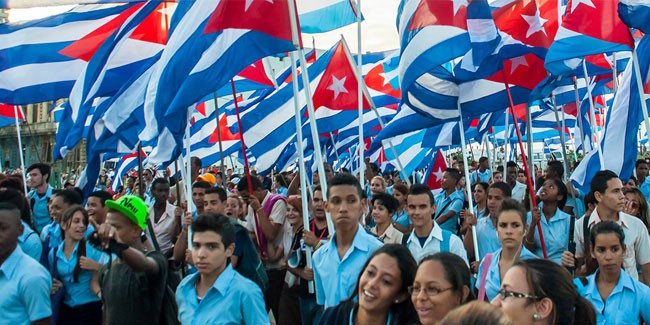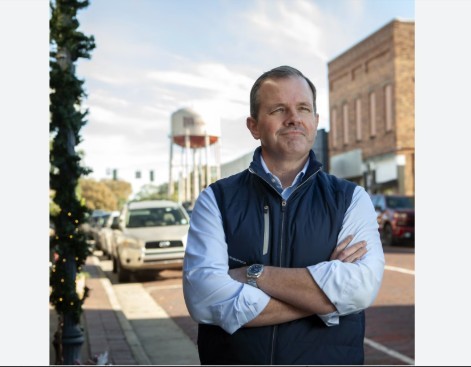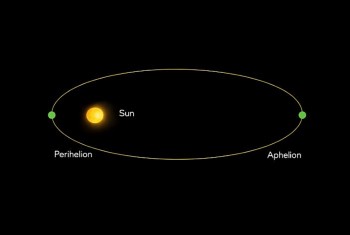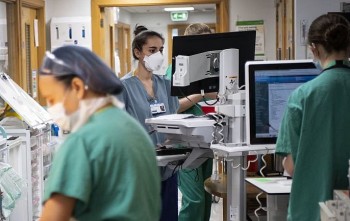What Is the Capital of Cuba: History, Facts, Best Places to See
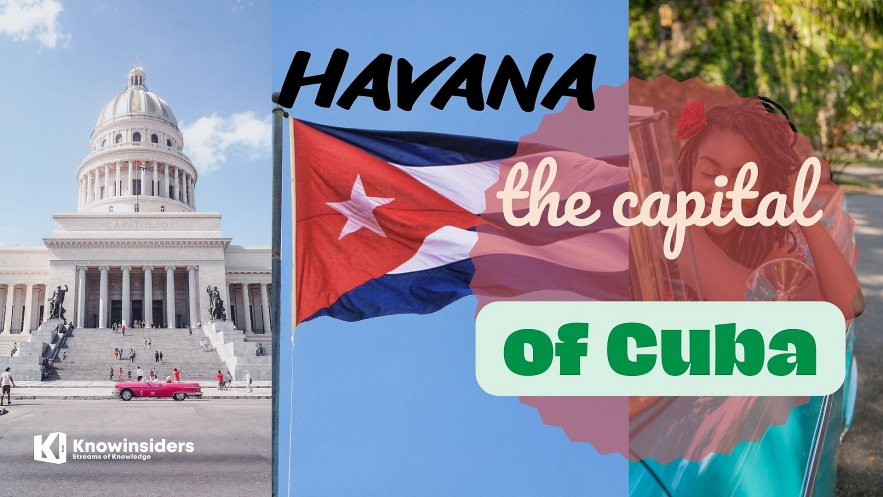 |
| What Is The Capital of Cuba: History, Facts, Best Places to See. Photo: knowinsiders. |
What is the Capital of Cuba?
How much do you know about Cuba? Let’s start with the basics, including history, best places to go and frequently asked questions and facts about the capital of Cuba.
La Habana (Havana), the capital of Cuba, is a city full of oppositions and contradictions. Its’ main attractions are its beautiful historic center, exceptional architecture, the revolutionary Cuban iconography (from El Malecon to the Plaza de la Revolución (Revolution Square), passing by La Giraldilla) and its broad range of cultural offers, which makes the Havana village one of the best destinations to visit in Latin America.
****
History of Havana
As lonelyplanet reported, no one could have invented Havana. It’s too audacious, too contradictory and – despite 60 years of withering neglect – too damned beautiful. How it does it is anyone’s guess. Maybe it’s the long history of piracy, colonialism and mobster rule. Perhaps it's the survivalist spirit of a populace scarred by two independence wars, a revolution and a US trade embargo. Or possibly it's something to do with the indefatigable salsa energy that ricochets off walls and emanates most emphatically from the people. Don’t come here with a list of questions; just bring an open mind and prepare for a long, slow seduction.
The history of Havana is truly fascinating, and in it you can find interesting museums, impressive restoration projects, and a magnificent artistic and cultural heritage. Paintings, murals, novels, poetry, puntos cubanos (a Cuban music genre mixed with poetry), rumbas, the wonderful feeling in the fun Havana streets and the colorful murals will delight your senses. You will discover, behind every corner, all that this wonderful city can offer: from street music to the cabaret, as tripcuba.org reported.
One of the more attractive aspects of Havana is to see how everyday life pans out in the city: happy children playing baseball on the street, street troubadours, a group of people doing maintenance on a Plymouth from 1955 in the middle of the street… and the peculiar way in which the people of Havana, the habaneros, project themselves, create, and live above all, enjoying life. Learn about their stories and the passions that move them as you enjoy an entertaining game of dominos and the atmosphere of tranquility that the city breathes.
| A 500-Year History In Havana, history is piled up like hoarded treasure in a dusty attic – except these days, thanks to proactive City Historian Eusebio Leal Spengler, the colonial thoroughfares look a little less dusty. Leal Spengler has been nailing Havana's exhausted infrastructure back together piece by piece for more than 30 years. The results are startling. Walk the streets of Habana Vieja today and you'll quickly feel a genuine connection with the past in imposing coastal fortifications and intimate, traffic-free plazas stuffed with museums. Equally engrossing are the scattered leftovers from Cuba's more recent marriages with the USA and the USSR. |
According to elmesondepepe.com, Cuban history is filled with intrigue. The haves vs. the have-nots, government vs. the citizens, those seeking independence vs. those who want to keep life the way it is, and so many in between are all showcased in this southern island nation. Here the past is always intertwined with the present. New life and adventure flow through the streets where domino players set up shop next to their hanging washing lines.
Like many island nations, the success of the city has always stood on the shoulders of its harbor – the largest natural port in the Caribbean. The original settlement of San Cristobal de la Habana was founded on St. Christopher’s Day in July of 1515 and slightly more than four years later was relocated to the city of the bay of Bahia de la Habana. Not surprisingly, the ports and bridges provided access as the early settlements sprung to life on the strength of the waterfront. The channel opening Cuba through to the Bahamas put Havana on the map! As the waterway access continued, it acted as a link between Spain and the New World and helped to establish trade routes from here to beyond.
Throughout the era when the Spanish conquistadors rummaged through the early Americas, Havana was the meeting place for the Spanish fleet before their voyage back across the Atlantic Ocean. Catering to the influx of seamen, sailors and the lot, the city rose to life with brothels, inns and gambling houses opening up along the ports and giving way to the possibility of attacks by pirates and their mates.
In the 1500s, Havana became the only Cuban port authorized for commerce, thereby giving Spain the opportunity for fort construction for years. After continuing to build up their forts for the next century, another full century later saw a protective wall spring up around the entire city. By the late 1700s, Havana was taken over by the British. With the boom of wealthy Spanish sugar, Havana’s new age of affluence, prosperity and financial wealth was born.
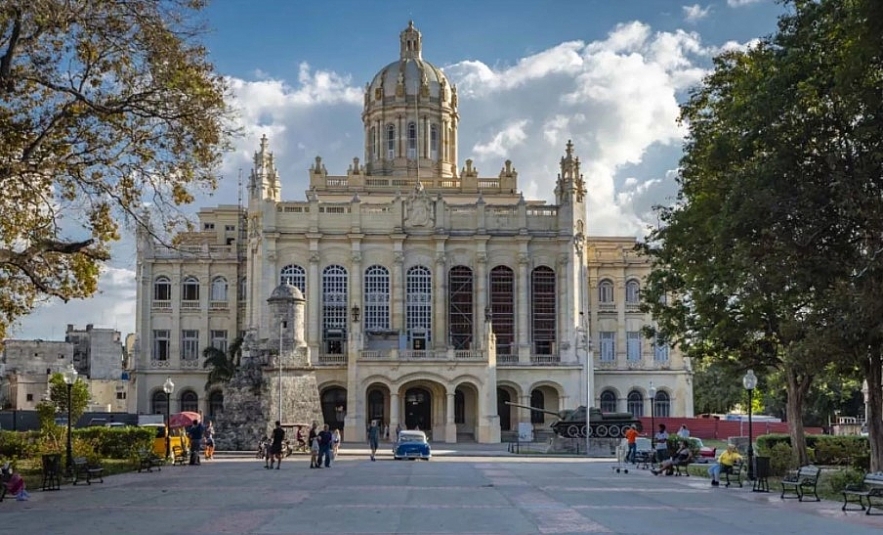 |
| Photo: theplanetd.com. |
Havana’s growth period came during the 19th century with beautiful buildings springing up everywhere with new age elegance coming anew. With the boom of buildings came the arrival of crime, corruption and the fleeing of city-dwellers to begin the suburban culture of Cuba. The 20th century brought tourism and towers, hotels and hot places and the tourist industry exploded. ‘Gangsters’ came to town seeking to make Havana the Las Vegas of the Caribbean.
| City Size and Population Density Havana is a city in Cuba, but it isn’t just any city, as worldpopulationreview. In addition to being the country’s capital city, it is also the largest by population. The population recorded during the last official census was 2,106,146. Havana isn’t just the most significant city by population. It is also Cuba’s largest city by area, which measures in at over 728.26 kilometers squared ( approximately 281.18 square miles). When breaking down the population, the city has a population density of 7,490 people per square mile. |
Best Places to See in Havana
Visit Havana, the capital of Cuba, and discover the perfect getaway in this fantastic and diverse city full of joy, culture, music and color. A trip to the capital wouldn't be complete without seeing the following attractions:
Stroll along El Malecón
According to theculturetrip.com, Cuba’s oceanside road and promenade is easily one of the most handsome in the world. The sea wall winds 8km (5mi) around Old Havana, past gritty Centro Havana before rounding the iconic Hotel Nacional on its sea-facing bluff and the US Embassy further west. Wander the popular stretch from Paseo del Prado westwards. Search for the caryatids of the Centro Hispanoamericano de Cultura, the coffin-shaped apartments, and the Primavera statue outside the mob-built Deauville Hotel.
Old Havana (Habana Vieja)
Old Havana, Cuba, a UNESCO World Heritage site, oozes the charm of days gone by, as planetware.com reported. Elegant neoclassical and Baroque buildings border cobbled squares and narrow streets, and many have been carefully restored to their former beauty.
If you're wondering what to do in Old Havana, start your sightseeing tour by heading to one of the popular public squares: Plaza Vieja and Plaza de Armas. The latter is where the splendid Palacio de los Capitanes stands, home to the Museo de la Ciudad (City Museum) and a delightful leafy courtyard.
Other highlights of Old Havana include the magnificent Catedral de San Cristobal, a celebration of the Cuban Baroque style, and the stout Castillo de la Real Fuerza, an impressive military fortress.
To tap into the lively vibe of Havana, take a walk along Calle Obispo. By day, you can browse the shops and art galleries and admire the colorful Cuban Baroque and Art Nouveau architecture. By night, live music lures you into buzzing restaurants and entertainment venues. Here, you'll also find the famous El Floridita restaurant, a must-do on most tourists' sightseeing lists.
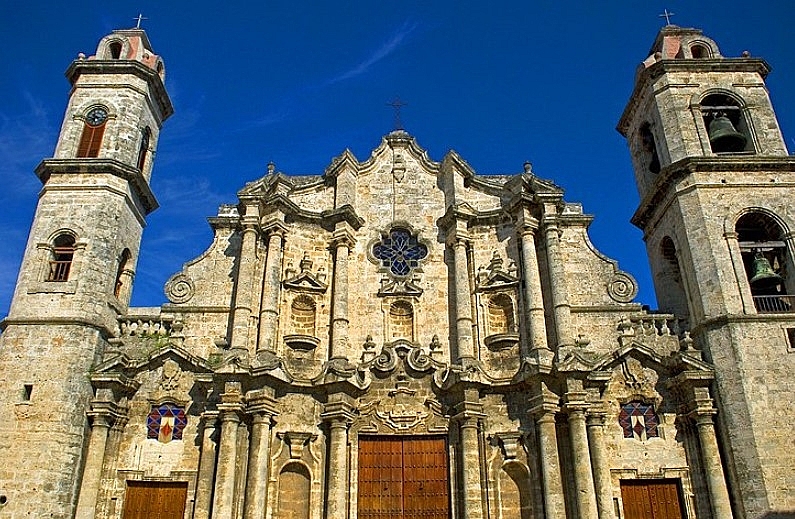 |
| Catedral de San Cristobal. Photo: planetware.com. |
El Morro Castle
El Morro Castle, otherwise known as “Castillo del Morro”, is a great starting point once you arrive in Havana. It’s situated on top of a rocky promontory at the entrance of Havana’s bay—it can’t be missed! It’s a massive fort with an equally impressive history.
The castle was built starting in 1590 to protect Havana against military attacks, and also served as a watch post to keep an eye out for enemies (like pirates!). It is composed of 3 bastions linked by curtain walls, casemented barracks and also houses cisterns, a chapel, officer’s quarters, a wine cellar, stables, and dungeons.
Today, according to expertvagabond.com, El Morro Castle is used as a museum and can be visited for a small fee. Its fantastic views make it a great first stop, a short taxi ride from the city center.
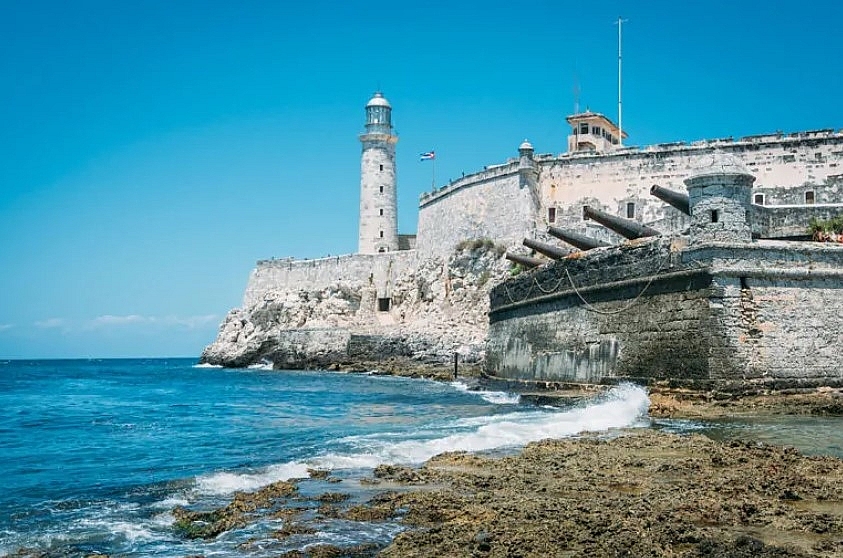 |
| Photo: expertvagabond.com. |
Museo del Ron Havana Club
According to touropia.com suggested, renowned around the world for its rum, the Museo del Ron located in the Havana Club will teach you how it is distilled – you’ll even get to do some taste testing. The aging cellars of the colonial townhouse are beautiful. Your guide will show you how sugar cane turns into the potent drink that is so beloved by many. With exhibitions on the history of rum in Cuba, the museum is interesting to visit even if you’re not a rum aficionado.
Tropicana Nightclub Show
Known as one of the hottest cabaret shows in the world, the Tropicana Nightclub Show is a world-famous spectacle set in a lush, tropical open-air venue that bursts with colorful lights, glitter, and glam. Salsa-charged and sensual, it’s a must-do activity during any trip to Havana Cuba.
This is one of the top things most tourists want to do in Havana, as expertvagabond.com reported.
Performers’ gaudy, feathered costumes are spectacles in and of themselves, but it’s the show as a whole that leaves you floored. Tickets are a bit pricey -— roughly $85 USD per person -— but include a welcome drink and cigar. We had a great night there!
El Capitolio (National Capitol Building)
Travelers to Havana who have visited Washington, D.C. may do a double take when they see beautiful El Capitolio, inaugurated in 1929. Rising from the city skyline, this grand building is reminiscent of the American Capitol building, but it was the Panthéon in Paris, which reputedly inspired its distinctive cupola.
The structure displays a blend of neoclassical and Art Nouveau styles and was the seat of government until 1959, after the Cuban Revolution.
For a small fee, you can take a guided tour of the recently restored building, with headsets provided in the language of your choice. Highlights include the grand hallways, beautiful inlaid marble floors, and massive dome.
Atop the dome is a replica of the bronze sculpture Mercury, originally created by the 16th-century Florentine sculptor Giambologna. Below the dome is a replica of a 24-carat diamond. This reputedly marks the point from where all highway distances between Havana and other destinations in Cuba are measured.
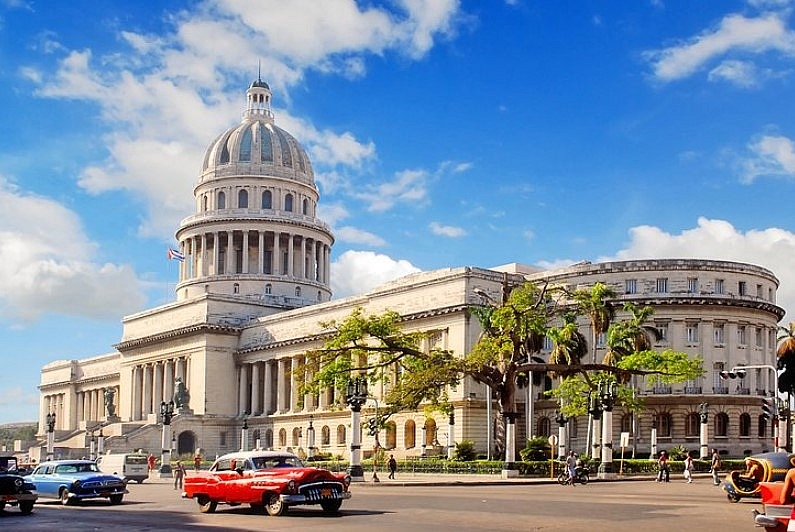 |
| Photo: planetware.com. |
Edificio Bacardí
It was all about Bacardí rum prior to the 1959 Revolution in Cuba when thousands of Americans suffering Prohibition escaped to the island for cocktails in the city’s famous bars. There was no better way to showcase profits than in a beautiful showy art deco company headquarters. Towering over Old Havana, it’s crowned by a ziggurat and the rum’s bat symbol. Go for the lobby, striped in pink Bavarian and dark Norwegian granite, as well as the little mezzanine café where you can admire the original decor.
Plaza Vieja
Our favorite square in Havana, Plaza Vieja is a historic square dating back to the 16th century. Colorful colonial buildings surround the square that is alive with bustling activity. This is a great place for a frozen lemonade or cocktail to take a break from sightseeing.
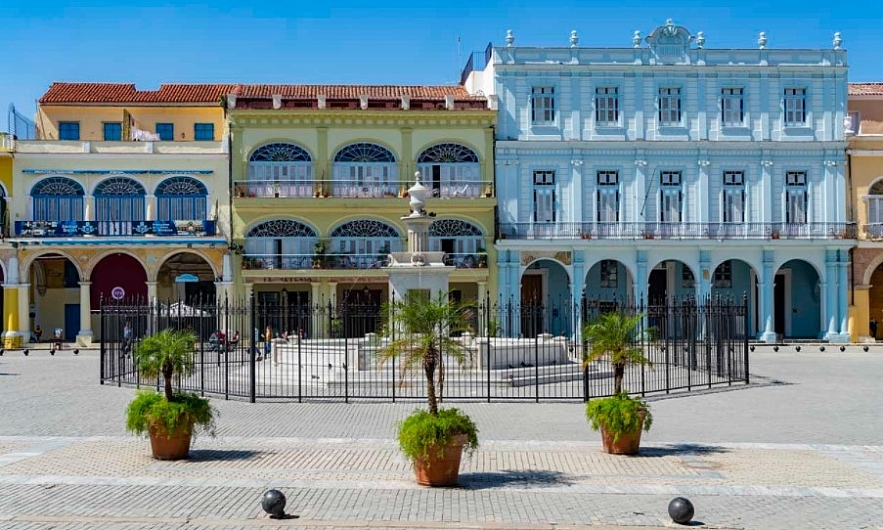 |
| Photo: theplanetd.com |
Revolution Square / Plaza de la Revolución
Also located in Vedado is the Plaza de la Revolución. Revolution Square is a must stop in Havana to see monument to the people and the facades of Che Guevara and The Ministry of Interior.
Plaza de la Revolución was here that Fidel Castro made many of his long-winded speeches to the people. We were told that thousands of people would sit for up to three hours in the heat listening to what he had to say.
Hotel Nacional
Cuba has elevated cigar smoking to an art form. For that reason, you can pretty much find a good cigar anywhere in Havana—but if you’re looking for the best spot to light up and take in the classy, glamorous, atmosphere that this city evokes, look no further than Hotel Nacional.
Hotel Nacional is not only the most famous hotel in Havana -— it’s also home to one of the city’s best cigar shops called La Casa del Habano. Or you can enjoy your cigar in the hotel’s backyard bar like we did, relaxing amidst beautiful ocean views, palm trees, and even real-live peacocks strolling by!
Interesting Facts about Havana
Here are some interesting facts about Havana that we summed up from mentalfloss.com, discoverwalks.com and havanatourcompany.com:
Havana was on the south coast of Cuba in a swampy area
When Havana was founded around 1515, it was on the south coast of Cuba in a swampy area near where Batabanó is now. Just a few years later, the city moved to its current spot on the northern coast with a built-in bay, which is now the harbor.
It more than 500 years old
Havana was founded by the Spanish in November 1519 along the natural harbour of the Bay of Havana. The Spanish would stop here whenever they travelled between the New World and the Old World. It became a shipbuilding centre in the 17th century. This led to the construction of baroque and neoclassical styled buildings. Unfortunately, most of the buildings got ruined in the 20th century. Some of the buildings have been restored. There are several buildings along the quaint narrow streets in Old Havana.
It is approximated that there are about 3,000 buildings in this part of town. The official centre of Old Havana is Plaza de Armas. Different types of people passed through Old Havana such as explorers, entertainers, indigenous people and buccaneers.
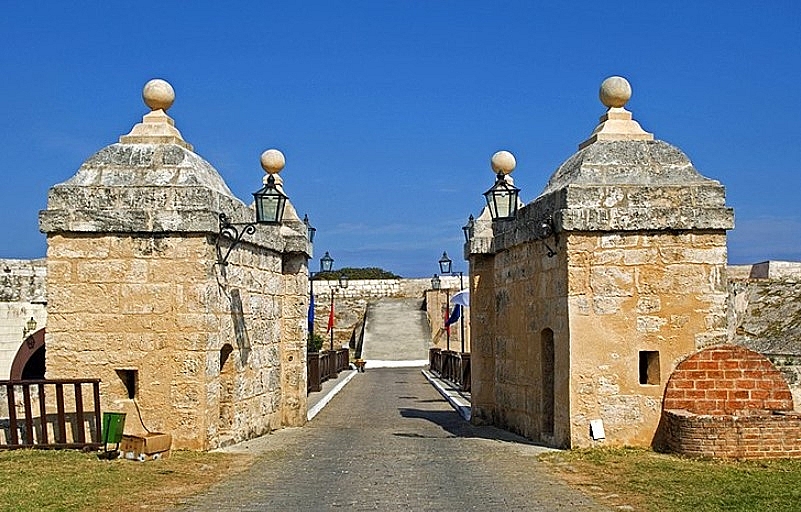 |
| Fortaleza de San Carlos de la Cabana. Photo: planetware.com. |
The architecture in Old Havana is similar to that in Spain
Old Havana bears a resemblance to Cadiz and Tenerife in Spain. This is because the Spanish used the same architectural designs like those found in Spain. These buildings were referred to as the columns since it has some ancient monuments, forts, convents, palaces and churches. The alleys and arcades are quite serene too.
The Cuban government has done extensive work in preserving and restoring the city. The renovation fully transformed Old Havana into a tourist attraction. This city is also known as Old Havana’s de facto Mayor.
From Rum to Bureaucracy
One of the most beautiful buildings in Havana is the former Bacardi Building. We say former, because an interesting fact about Havana is that the Bacardi family fled the city in the aftermath of the Cuban Revolution, taking their rum producing operations with them. This amazingly gorgeous art deco building was completed in 1930 and even has a bell tower at its peak. Private enterprises (and assets) were seized by the state after the revolution, so the Bacardi’s swiftly left the city, leaving their lovely building behind. Its new purpose (as government offices) was somewhat less exciting, but wouldn’t it be nice to go to work somewhere so beautiful?
The French army burnt the city but the Spanish rebuilt it
In 1555, Old Havana was destroyed by Frenchman known as corsair Jacques de Sores. He had taken over the city by overpowering the defenders. Jacques destroyed the city and burnt it down to the ground. He, unfortunately, did not get any treasures he hoped he would get before plundering.He was overpowered and thrown away. The Spanish army was brought in to rebuild the city walls and protect them. Construction of Castillo de la Real Fuerza began in 1558. This was the first fortress built and was supervised by engineer Bartolomé Sanchez.
Culture in Havana is diverse
Havana is a hub of a rich and diverse cultural environment. It is made up of the Spanish, Europeans, Africans and other native Indian tribes. The original native Indian tribe that lived here was displaced during the first contact with the Spanish. Following the colonial years, a huge number of black slaves were brought from Africa. After abolishing slavery in the 19th century, they moved to Havana where they mixed with White Spanish, Black ethnic groups, and the mulatto strains. There is a park in Old Havana that is named in honour of John Lennon. Fidel Castro was a big fan of the Beatles, he also ensured that there is a life-size statue sitting on a bench in the park.
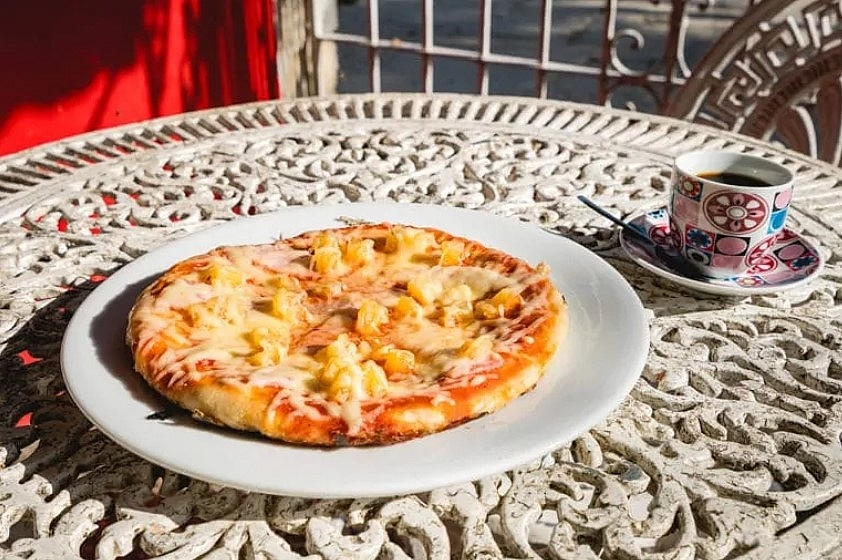 |
| Typical Cuban Pizza in Havana. Photo: expertvagabond.com. |
There used to be walls that protected the city from invaders
After Jacques’s ruined the city, the Spanish brought their armies to repair the city. One addition to the city was the construction of walls to protect it from invaders. As the city grew, the borders of Old Havan extended beyond the original walls. Since the southern and eastern were already stretched, the city was later expanded to the east through the construction of tunnels.nThis led to the development of suburbs like La Habana del Este. There are other several broad avenues and boulevards across the city.The Malecon is a beautiful boulevard that nstretches to the southwest along the port entrance of Almendares river. The tunnel under the port connects to Miramar.
Plaza Vieja was used for military exercises
Plaza Vieja in Old Havana is a historical location. Several incarnations have taken place in this part of town. It is one of the most popular spots in Havana that attracts both locals and tourists. The foundation of the Square was laid in the 16th century and was used for military exercises. It was later turned into a market place.
| Frequently Asked Questions about Cuba and Havana When is the best time to travel to Cuba? The best, sunniest months to travel in Cuba are March, April, October, and November. This is also outside of the peak tourist season, which is December - February. Hurricane season runs June 1 - September 30 so you could easily end up needing to cancel a trip during this time if a hurricane forms. What's the best food in Havana? Tamales, medianoche, pernil Relleno de Moros y Cristianos, Vaca Frita, Frita, Shrimps in coconut sauce. Is it safe to travel to Cuba? According to viahero.com, Cuba is the safest country in the Western hemisphere. Period. If you keep your wits about you, you're safer in Cuba than you are at home. Use the same common sense you would at home - there are certain areas to avoid at night, find out what they are and don't go there. Follow your gut instincts. If something doesn't feel safe, it probably isn't. Women traveling alone should take a few extra precautions. Hitchhiking is particularly risky for women, so you should only do that alone if you have no other option. At night, take metered taxis and ask the driver to wait until you've gotten inside your hotel before they depart. Most drivers will happily accommodate this request. Do they speak much English in Cuba? Many Cubans do speak English, especially those that regularly interact with those traveling in Cuba. However, the further you get off the beaten path the fewer people you'll meet who speak English. We recommend learning basic Spanish phrases at a minimum. Please, thank you and a warm smile will go a long way in most interactions. Learning greetings, directions, numbers, and words for foods will help you immensely. How do I exchange money when I travel to Cuba? The easiest way: bring cash and exchange it in Cuba. Americans can't use credit or debit cards in Cuba because of the embargo. For all the details, check out our comprehensive post on what you need to know about money in Cuba. |
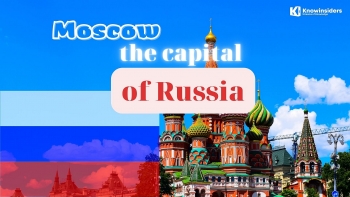 What Is The Capital of Russia: History, Facts, Best Places to See What Is The Capital of Russia: History, Facts, Best Places to See A fascinating city to wander around, stunning cathedrals, churches, and palaces lie side-by-side with bleak grey monuments and remains from the Soviet state. We rounded ... |
 What Is the Capital of China: History, Facts and Best Places to See What Is the Capital of China: History, Facts and Best Places to See Beijing is the capital city of China and is known for its rich history and modern architecture. We rounded up all things you need to ... |
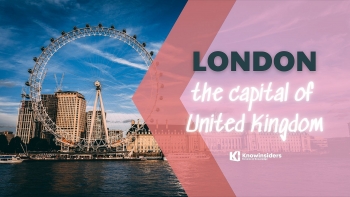 What Is The Capital of U.K: History, Best Places to See and Facts What Is The Capital of U.K: History, Best Places to See and Facts The United Kingdom, also called the U.K., consists of a group of islands off the northwest coast of Europe. We rounded up all things you ... |

